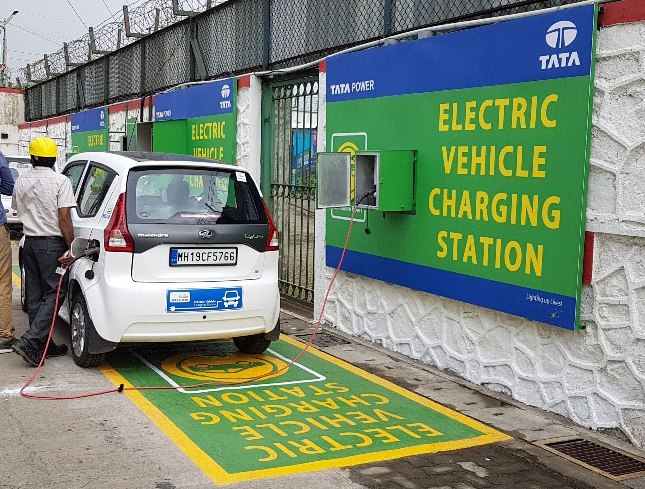The Ministry of Heavy Industries has sanctioned 4,500 electric vehicle (EV) charging stations to be put up across the country, it was recently informed in Parliament.
These EV charging stations will be set up under Phase II of the FAME (Faster Adoption and Manufacturing of Hybrid and Electric Vehicles) scheme, for which an outlay of Rs.1,000 crore has been sanctioned.
These charging stations include 2,877 stations to come up in 68 identified cities across 25 states and UTs. Another 1,576 charging stations will be put up on nine expressways and 16 national highways.
Meanwhile, out of the 520 charging stations under Phase-I of the FAME scheme, a total of 452 stations have been commissioned up to December 3, 2021.
Energy Efficiency Services Ltd (EESL) has put up the maximum number of 396 EV charging stations (out of the 452 commissioned up to December 3, 2021), followed by NTPC with 142 and Power Grid Corporation of India (PGCIL) with 24.
Also read: Solar-Based EV Charging Station On Delhi-Chandigarh Highway Inaugurated
No licence required
It may be recalled that on April 13, 2018, the Union power ministry issued a clarification on charging infrastructure for EVs, in the context of provisions of the Electricity Act, 2003. Accordingly, the power ministry clarified that charging of batteries of electric vehicles through charging station does not require any licence under the provisions of Electricity Act, 2003.
It may also be mentioned that Bureau of Energy Efficiency (BEE), a body under the Union power ministry, has been selected as the Central Nodal Agency (CNA) for the FAME scheme.
Go Electric Campaign
On February 19, 2021, the Union ministry of power along with ministry of road transport and highways, ministry of heavy industries and NITI Aayog launched a nationwide “Go Electric” campaign to educate the general public on the benefits of e-mobility, inform the potential EV owners about the government incentives for EV adoption, generate curiosity and transform the same into demand, discredit misinformation against EVs, and bring together multiple stakeholders under single platform.
(Featured photograph (source: Tata Power) is for representation only)



